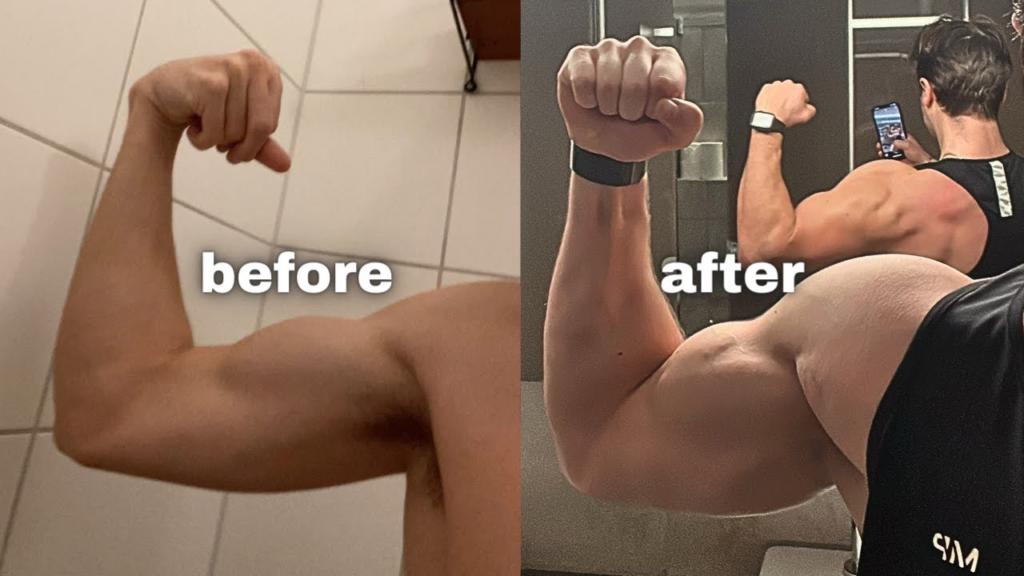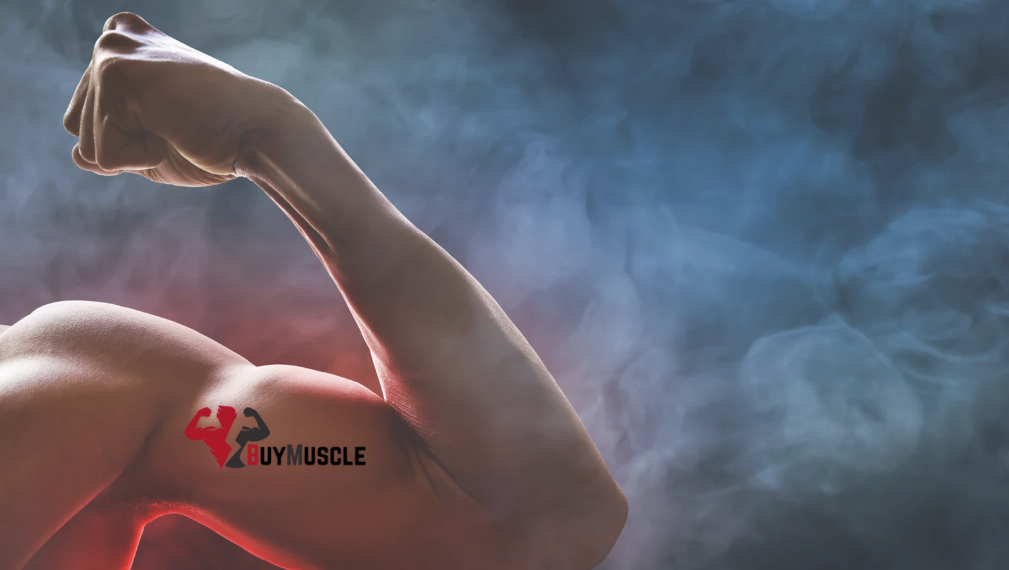A 4-finger bicep gap refers to the space between the end of the bicep muscle and the elbow when you flex your arm. Some individuals naturally have a more pronounced gap due to genetic factors, while others have a fuller muscle belly that extends closer to the elbow. This muscle gap often raises concerns in bodybuilding and strength training, leading people to question whether it affects performance or aesthetics.
What Causes a Bicep Gap?
Some people have long bicep insertions where the muscle belly extends close to the elbow, creating a fuller appearance. Others have short bicep insertions, leaving a visible gap between the muscle and the joint. These variations are purely genetic and cannot be changed through training.
Shorter muscle bellies result in a more noticeable gap, while longer muscle bellies create a fuller, more connected appearance. This variation does not indicate weakness but rather a natural difference in anatomy that varies from person to person.
Individuals with longer bicep tendons will have a greater distance between the muscle belly and the elbow. It is not a sign of underdevelopment but a structural trait dictated by genetics. Since tendons do not grow in response to resistance training, altering this feature is not possible.

Does a Bicep Gap Affect Strength and Performance?
Muscle shape does not determine strength. A person with a noticeable bicep gap can be just as strong as someone with a fuller-looking muscle. Strength comes from muscle fiber density, neurological efficiency, and training consistency rather than the length of the muscle belly.
A bicep gap does not significantly impact grip strength or pulling power in exercises like deadlifts, rows, and chin-ups. The biceps do the elbow flexion and forearm supination, and muscle shape does not hinder these movements. However, shorter muscle bellies may require more focused training to develop peak thickness.
Many elite athletes, including powerlifters and bodybuilders, display a variety of muscle insertion points. Some have prominent bicep gaps yet still achieve remarkable strength and muscularity, demonstrating that muscle insertion points do not dictate performance potential.
Can You Fix or Reduce the Appearance of a Bicep Gap?
While you cannot change the length of the muscle belly, specific exercises can enhance the overall bicep appearance. Hammer curls target the brachialis muscle, which lies underneath the biceps and can add thickness to the arm. Concentration curls and preacher curls help create a more pronounced bicep peak by isolating the muscle.
Since the triceps make up a significant portion of upper arm mass, their development can minimize the appearance of a bicep gap. Strengthening the forearms also improves overall arm aesthetics and grip performance.
Spot training will not lengthen the bicep muscle belly or reduce a gap caused by genetics. Instead, the best approach is to focus on overall muscle development and realistic expectations.

Should You Be Concerned About a Bicep Gap?
A sudden or increasing gap in the bicep muscle could indicate a tendon rupture. Symptoms such as sharp pain, bruising, and weakness in the arm require immediate medical attention. A complete bicep tendon tear often results in a significant deformity and loss of strength.
A well-trained athlete with a noticeable bicep gap can still excel in weightlifting, sports, and physical performance. Muscle insertion points do not limit the ability to build strength or endurance.
Every individual has unique muscular features that contribute to their overall physique. Rather than focusing on unchangeable traits, prioritizing training, nutrition, and consistency leads to better results.

Frequently Asked Questions
Is a 4-finger bicep gap bad for strength?
No, a bicep gap does not significantly impact strength. Muscle attachment points vary by genetics, but strength is determined by training and muscle fiber development.
Can you fix a bicep gap?
No, you cannot change muscle insertion points. However, training can enhance bicep thickness and arm aesthetics.
Does a bicep gap affect weightlifting performance?
No, muscle insertions do not impact pulling strength, grip, or athletic ability. Many elite lifters and athletes have bicep gaps without performance issues.








